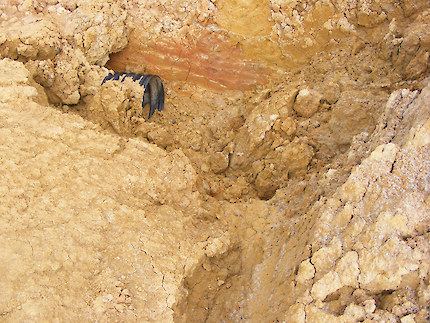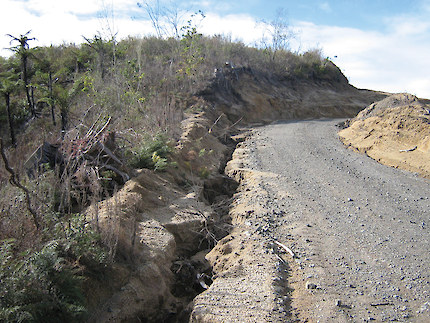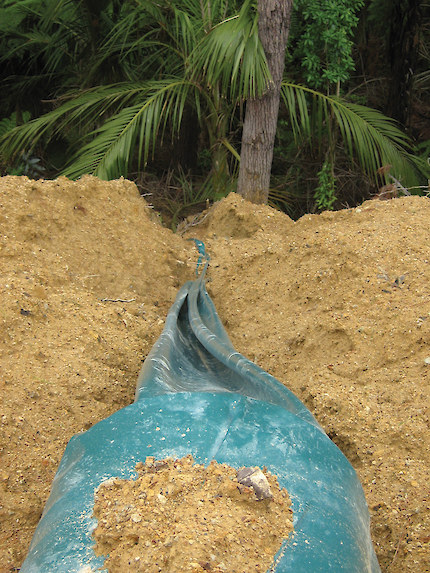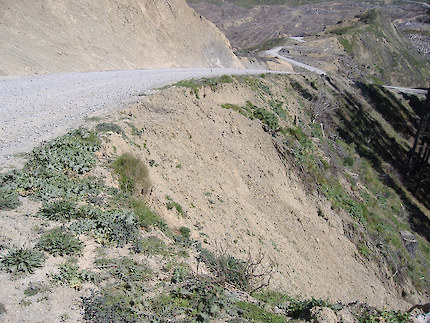R&M is often needed on new construction, especially after storms and before vegetation has grown. Work includes fixing bank collapse, and cleaning out ditches, drainage culvert inlets and outlets, and sediment control structures.

- Newly cut banks can fail especially after heavy rain
- Clean up slips quickly before more damage occurs

- Sediment traps need to be maintained
- Check new construction regularly until it stabilises, and especially after heavy rain
- Clean out if they have lost 1/3 of their storage

- Silt fences are short-term solutions. They are difficult to maintain as they can fill rapidly and are hard to clean out

- Culvert mouths are vulnerable to bank collapse and infilling
- Check culverts regularly, especially on new roads
- After clearing the bulk with the excavator, use a shovel to clear around the culvert mouth
- Be sure stormwater will go down the culvert!

- Water tables on new roads need to be inspected after every storm
- They can scour and block culverts
- Additional culverts may need to be added after construction

- Drainage socks need to have regular maintenance, as they can easily twist or roll
- This sock was poorly anchored

- Fill slopes need to be inspected
- Water has drained across a fill leading to a slump
- A berm would have helped direct water off the road at a more suitable location

- Steep roads in wet areas often need more maintenance than other roads
- Make sure the maintenance programme identifies high-risk steep roads